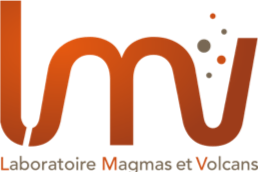
- Cet évènement est passé.
Séminaire de Duane Smythe
6 novembre 2018 à 14 h 00 min - 17 h 00 min
Sulfur in Igneous Systems: Solubility, Redox State and the Distribution of Chalcophile Elements
The solubility of sulfur in silicate melts is a topic that has attracted the attention of; metallurgists interested in the conditions under which immiscible sulfide mattes segregate from silicate slags; glass scientists concerned with mitigating exsolution of sulfate phases in radioactive waste glass; and of geologists studying the behaviour of sulfur and chalcophile elements during igneous processes. From a geological perspective an understanding of sulfur solubility is fundamental to fully understand the behaviour of igneous systems as it is a control in; volcanic degassing; the concentrations of chalcophile elements, such as Cu, Ag, Tl and the PGE’s, in the crystallising silicate melts; and the formation of magmatic sulfide ore deposits. Through the formation of sulfide mattes, sulfur solubility can also be a potentially important factor in the planetary-scale distribution of chalcophile elements during accretion and differentiation.
For these reasons there have been numerous experimental investigations into the processes that control the incorporation of sulfur in naturally-occurring silicate melts. These studies have primarily focused on the effects of silicate melt composition, temperature and pressure on the concentration of sulfur in silicate melts in equilibrium with immiscible sulfide liquids [1,2]. Our recent experimental results have also shown that the composition of the sulfide liquid is another important factor governing the solubility of sulfur in silicate melts.
A potentially important factor, which has largely been ignored, is the effect of the redox state of system. Previous solubility models have primarily operated under the assumption that sulfur is present in silicate melts exclusively as S2-, however, under the redox conditions of relatively oxidized terrestrial magmas a significant fraction of sulfur will be S6+ [3], which will dramatically increase the total solubility sulfur in a melt. To better constrain the redox behaviour of sulfur we have measured the concentration and redox state of sulfur in a series of synthetic silicate melts equilibrated under controlled temperature, fO2 and fS2 conditions at 1 bar. The S6+/S2- ratios of our run products were determined by S K-edge X-ray Absorption Near-Edge Structure (XANES) spectroscopy in combination with Secondary Ion Mass Spectrometry (SIMS). The S6+/S2- of our samples show a linear relationship with calculated Fe3+/Fe2+ [4], following the equilibrium FeS + 8FeO1.5 = 8FeO + FeSO4, indicating that the redox couples for Fe and S can be directly related. This allows for better constraints of the behaviour of sulfur in magmatic systems, the role sulfide plays in the distribution of chalcophile elements, as well as the interpretation of magma redox from Fe2+/Fe3+ in natural glasses.
[1] O’Neill and Mavrogenes (2002) Journal of Petrology 43, 1049–1087. [2] Li and Ripley (2005) Mineralium Deposita 40, 218–230. [3] Liu et al. (2007) Geochimica et Cosmochimica Acta 71, 1783–1799. [3] Jugo et al. (2010) Geochim. Cosmochim. Acta 74, 5926-5938. [4] Kress and Carmicheal (1991) Contrib. Mineral. Pertol. 108, 82-92.



